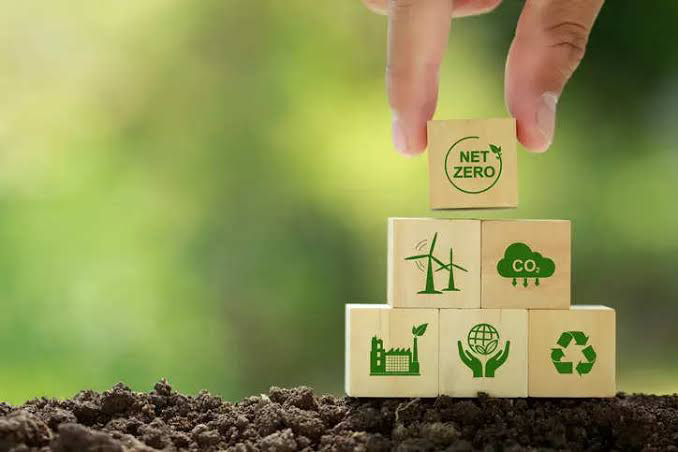Carbon offsets, also known as carbon credits, are permits allowing the emission of a specific amount of carbon dioxide or other greenhouse gases. It originated from the need to reduce greenhouse gas emissions.
HOW DO CARBON CREDITS WORK?
Companies or nations are allotted a certain number of credits and may trade them to help balance total worldwide emissions.
ORIGIN
Early experiments with trading offsets of lead, Sulphur dioxide and nitrous oxide in the US laid the groundwork for market-based environmental regulation worldwide.
OFFSET ORIGINS
According to Dr Mark Trexler, the first batch of offsets projects was “purely a philanthropic exercise.” He tells Carbon Brief they were designed more as a way of “getting companies and electric utilities to think about carbon dioxide (CO2)."
EARLY THEORETICAL FOUNDATIONS (1970s-1980s)
The theoretical foundations for emissions trading can be traced back to academic work in the 1970s and 1980s.
ACID RAIN PROGRAMS (1980s)
The concept of cap-and-trade gained practical application in the United States in the 1980s and implementations to address acid rain.
INTRODUCTION IN INTERNATIONAL CLIMATE AGREEMENTS (1990S)
The idea of using market mechanisms to address climate change gained international attention during negotiations.
KYOTO PROTOCOL (1997)
The Kyoto Protocol was a landmark international treaty that included emissions trading as one of its flexible mechanisms.
EXPANSION TO THE EUROPEAN UNION (2005)
The protocol introduced emissions trading and the Clean Development Mechanism (CDM), allowing countries to invest in emission reduction projects in other nations.
CORPORATE ADOPTION AND NET ZERO TARGETS (2010S- PRESENT)
The origin of carbon trading and offsets is a combination of economic principles, practical applications in addressing environmental challenges.
EVOLUTION IN GLOBAL CLIMATE AGREEMENTS
Subsequent climate agreements, including the Paris Agreement (2015), acknowledged and encouraged the use of market-based mechanisms.
Picture credit; The Nature Conservacy
BENEFITS OF NET ZERO CARBON OFFSETS AND TRADING
1) Mitigating the consequences of climate emergency and cutting carbon emissions.
2) Developing new industries to generate economic possibilities and boost the economy.
3) Keeping the public healthy by maintaining adequate air quality.
4)Advancing fairness for the environment
5) Protecting the natural resources, such as soil, water, and other natural resources.
6) Assuring the security of food
7) Minimizing the likelihood of natural disasters including floods, droughts, and storms.
SUCCESSES
Denmark's green culture has been established via the usage of wind turbines, wind farms located offshore, and waste-to-energy incineration plants.
Norway strategies adopted include driving electric cars, producing electricity from garbage, and promoting the use of renewable energy.
REASONS WHY NET ZERO CARBON OFFSET AND TRADING HAS BEEN DUBBED TO BE A FALSE SOLUTION
Carbon offsets are hard to measure accurately, as they rely on the assumption that the CO2 removed equals or exceeds the CO2 produced.
Most carbon offset schemes do not last, especially reforestation projects.
The name "Net Zero Carbon Offset and Trading" implies taking proactive steps to neutralize carbon impact through offset initiatives and trading practices.
RECOMMENDATIONS FOR NET ZERO CARBON OFFSETS AND TRADING CORPORATIONS IN COMBATING CLIMATE CRISIS
- INVEST IN RENEWABLE ENERGY.
Investing in renewable energy is a great way to reduce the amount of carbon dioxide released into the atmosphere.
- PLANT TREES TO OFFSET EMISSIONS
Planting trees is a great way to offset emissions, as trees absorb carbon dioxide from the atmosphere as they grow. This process is called carbon sequestration.
- USE CARBON CAPTURE AND STORAGE TECHNOLOGY
Carbon capture and storage (CCS) technology can be used to capture emissions from power plants and store them underground.
REFERENCES
Aruna Chandrasekhar, J. G. (2023, September 25). Timeline: The 60-year history of carbon offsets. Carbon Brief. https://interactive.carbonbrief.org/carbon-offsets-2023/timeline.html
Editor. (2023, July 24). Net zero: Benefits, challenges, strategies, and the power of nature-based solutions. DGB Group. https://www.green.earth/blog/net-zero-benefits-challenges-strategies-and-the-power-of-nature-based-solutions#:~:text=Achieving%20net%20zero%20can%20significantly,resilience%20while%20reducing%20carbon%2
Irfan, U. (2020, February 27). Can you really negate your carbon emissions? carbon offsets, explained. Vox. https://www.vox.com/2020/2/27/20994118/carbon-offset-climate-change-net-zero-neutral-emissions
Pyrgioti, S. (2024, January 24). The history of carbon offsets by Mark Trexler. CarbonCloud. https://carboncloud.com/blog/offset-history-trexler/
Article written by GSAG NET ZERO CARBON OFFSETS AND TRADING
Members
Peace URAMA
Azeezat BELLO
Rahmot IBRAHIM
Nassanga HANIN
Khalil SHITTU
Chibuzor JOHN
Tomisona AYO-OLA
Oluwatosin OLUSANYA
Aisha OSENI
Sunday OYEBODE
Dennis SAMSON
GSAM — Aanu ALUGBIN











.jpeg)





0 Comments